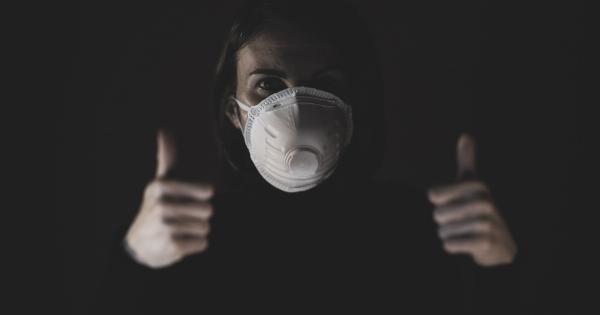Brucellosis is a bacterial infection caused by various species of the Brucella bacteria. It primarily affects animals but can also be transmitted to humans, resulting in a zoonotic disease.
The transmission of brucellosis can occur through multiple routes, including direct contact with infected animals, consumption of contaminated animal products, or inhalation of infectious aerosols. This article explores the different ways in which brucellosis can be transmitted.
1. Direct Contact with Infected Animals
Direct contact with infected animals is one of the primary modes of brucellosis transmission. The Brucella bacteria can be present in the tissues, body fluids, and secretions of infected animals, including livestock such as cows, pigs, sheep, and goats.
Humans can contract brucellosis by handling these animals without taking adequate precautions. Any break in the skin or mucous membranes can provide a route for the bacteria to enter the body.
2. Consumption of Contaminated Animal Products
Brucellosis can also be transmitted through the consumption of contaminated animal products.
Unpasteurized milk and dairy products made from the milk of infected animals can contain the Brucella bacteria, making them a potential source of infection for humans. Similarly, undercooked or raw meat from infected animals can also harbor the bacteria. Individuals who consume these products may ingest the bacteria, leading to the development of brucellosis.
3. Inhalation of Infectious Aerosols
In rare cases, brucellosis can be transmitted through the inhalation of infectious aerosols.
This mode of transmission typically occurs in occupational settings where individuals are exposed to respiratory secretions or aerosols generated during the handling of infected animals or contaminated animal products. Inhalation of the bacteria can lead to the development of respiratory brucellosis, which primarily affects the lungs.
4. Occupational Exposure
Occupational exposure to infected animals or their products can significantly increase the risk of brucellosis transmission.
Workers in the veterinary and livestock industries, slaughterhouse employees, laboratory personnel working with Brucella cultures, and farmers are at higher risk due to their direct contact with potentially infected animals or contaminated materials. Proper protective measures, such as wearing gloves, masks, and other personal protective equipment, can help reduce the risk of transmission among these occupational groups.
5. Vertical Transmission
Brucellosis can also be transmitted vertically, from mother to fetus during pregnancy. Infected pregnant animals can pass the infection to their offspring, leading to congenital brucellosis.
This mode of transmission is common in animals, but human cases are extremely rare. However, it is essential to follow appropriate precautions during pregnancy to minimize the risk of vertical transmission.
6. Sexual Transmission
Although rare, brucellosis can be sexually transmitted from an infected individual to a partner. The Brucella bacteria can be present in genital secretions, and unprotected sexual contact can result in transmission.
While sexual transmission is not a common route, it is something to be mindful of, especially when one partner has been diagnosed with brucellosis.
7. Laboratory Accidents
Laboratory personnel working with Brucella cultures or samples may be at risk of accidental exposure, leading to brucellosis transmission.
Contact with contaminated materials or accidental breaches in safety protocols can result in the bacteria entering the body through cuts, abrasions, or inhalation. Proper adherence to biosafety protocols and training for laboratory personnel can prevent these accidents and reduce the risk.
8. Blood Transfusions and Organ Transplants
In rare cases, brucellosis can be transmitted through blood transfusions or organ transplants from infected donors.
Although stringent screening protocols are followed to prevent such transmissions, there have been documented cases where Brucella infection was transmitted through these procedures. Maintaining a high level of vigilance and implementing appropriate screening methods can help minimize this risk.
9. Contaminated Laboratory Equipment
Contamination of laboratory equipment with Brucella bacteria can occur during the handling of infected samples.
Improper decontamination methods or the use of inadequately sterilized equipment can result in the persistence of the bacteria on surfaces or instruments. If not properly handled or cleaned, this contaminated equipment can serve as a potential source of infection for laboratory personnel or anyone who comes into contact with it.
10. Contaminated Environment
In certain circumstances, the Brucella bacteria can persist in the environment, leading to indirect transmission. Areas where infected animals have been present or where contaminated materials have been improperly disposed of can harbor the bacteria.
Individuals who come into contact with such contaminated environments may unknowingly pick up the bacteria and contract brucellosis. Proper hygiene practices, including regular handwashing and maintaining a clean environment, can help reduce the risk of indirect transmission.






























